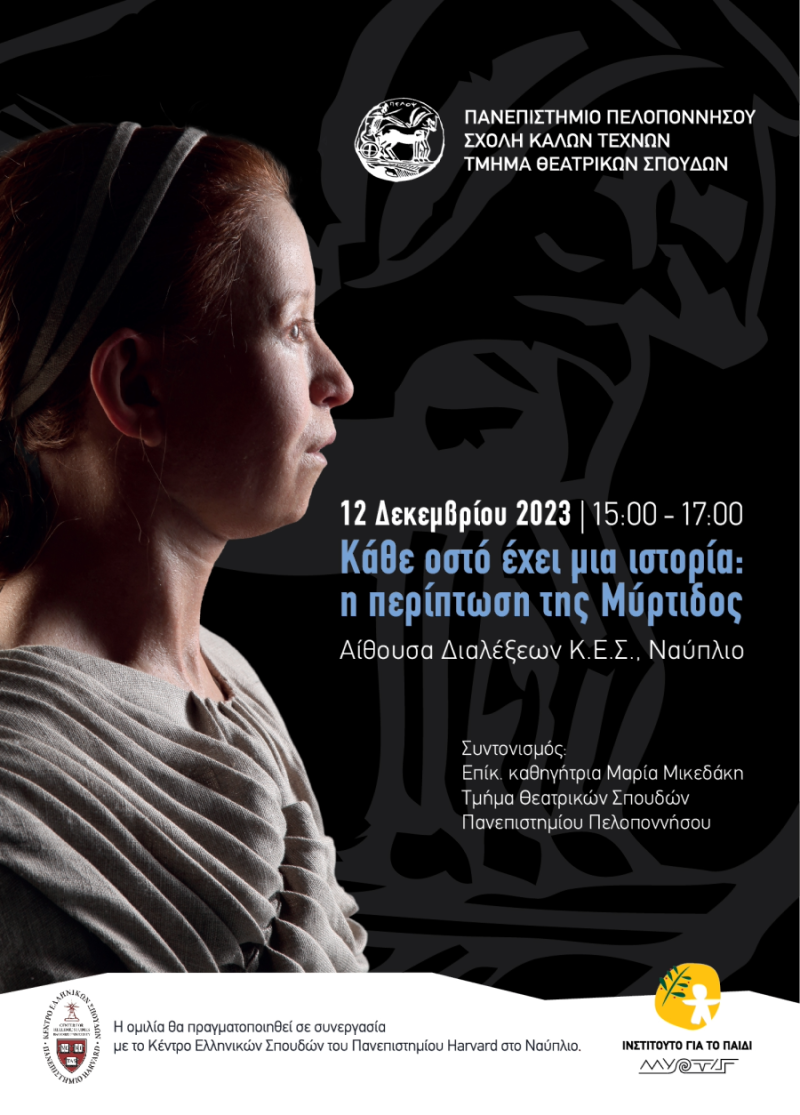Key information
- Topic: Every bone has a story: the case of Myrtis
- Date: Tuesday, December 12, 2023, 3 pm-5 pm
- Location: CHS Greece
- Organized by: The Department of Theatre Studies, University of Peloponnese, CHS Greece
- Open to: All
- Language: Greek
- Speaker: Manolis Papagrigorakis (Assistant Professor in Orthodontics, National and Kapodistrian University of Athens)
- Activity coordination: Maria Mikedaki (Department of Theatre Studies, University of Peloponnese), Evan Katsarelis (CHS Greece)
About the event
Overview
The Department of Theatre Studies of the University of Peloponnese and CHS Greece organize the event entitled "Every bone has a story: the case of Myrtis" with University of Athens Professor Manolis Papagrigorakis as its speaker. The event will be moderated by Maria Mikedaki, Assistant Professor in the Department of Theatre Studies of the University of Peloponnese.

Manolis Papagrigorakis is a graduate of the School of Dentistry and the School of Medicine at the National and Kapodistrian University of Athens. He specialized in Orthodontics at the University of Bergen, Norway, focusing on special needs and sleep apnea, and has served for many years as General Supervisor of Studies for the Postgraduate Program in Museum Studies at the University of Athens. He has authored four books and numerous publications in international journals, and presented at European conferences on Orthodontics, Archaeology-Museology-Reconstruction, and Biopathology. His diverse research includes studies on the craniofacial complex of ancient and modern Greeks. Notably, he reconstructed the faces of Avgi, a Mesolithic woman from 7000 BC, and Myrtis, an eleven-year-old victim of the plague in Athens in 430 BC.
Myrtis was hastily buried in a mass grave in the Kerameikos cemetery. In 1994-95, her skull revealed genes that matched those of a bacterium called Salmonella enterica serovar Typhi, suggesting that the pathogening factor responsible for the plague of Athens was the typhoid fever. Moreover, thanks to the excellent preservation of Myrtis' skull, Professor Papagrigorakis and his team reconstructed her face, turning her into a cultural phenomenon—UN ambassador, "Friend of the Millennium", featured in history books, stamps, collectible coins and various artistic media. Myrtis continues to be a subject of research, theatrical performances and technological applications, transcending time as a symbol of the ancient epidemic.
More information about the project can be found on the website dedicated to Myrtis.